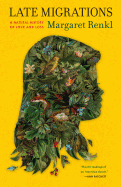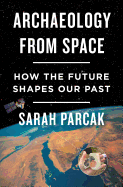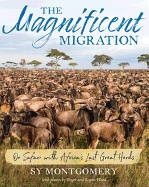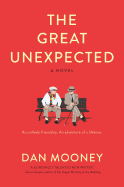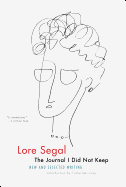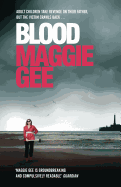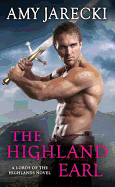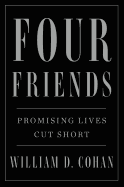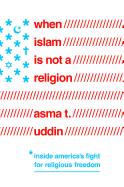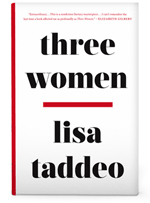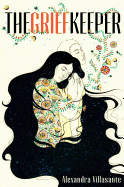Tuesday, July 9, 2019
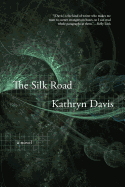 I've just returned from the hypnotic pilgrimage that is Kathryn Davis's gorgeous novel The Silk Road (Graywolf), where the bardo somehow intersects with the Camino de Santiago: "Like the place in the dream where you always get lost, a well-traveled, well-known road shaking you loose into fear and confusion, propelling you toward that house just around the bend but there is no toward, there is no house, there is no bend."
I've just returned from the hypnotic pilgrimage that is Kathryn Davis's gorgeous novel The Silk Road (Graywolf), where the bardo somehow intersects with the Camino de Santiago: "Like the place in the dream where you always get lost, a well-traveled, well-known road shaking you loose into fear and confusion, propelling you toward that house just around the bend but there is no toward, there is no house, there is no bend."
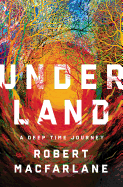 Walking is complicated. "For more than 15 years now I have been writing about the relationships between landscape and the human heart," Robert Macfarlane observes in Underland: A Deep Time Journey (Norton), an extraordinary account of his own "journeys into darkness, and of descents made in search of knowledge." Sometimes he climbs: "A cloud-sea fills the landscape below us."
Walking is complicated. "For more than 15 years now I have been writing about the relationships between landscape and the human heart," Robert Macfarlane observes in Underland: A Deep Time Journey (Norton), an extraordinary account of his own "journeys into darkness, and of descents made in search of knowledge." Sometimes he climbs: "A cloud-sea fills the landscape below us."
 In Here Is Where I Walk: Episodes from a Life in the Forest (University of Nevada Press), Leslie Carol Roberts deftly explores her world through the lens of daily walks in San Francisco's Presidio: "I think of the wild and how it inhabits urban spaces, as image, memory, park, as a place for art to show ideas of our larger situation. Are city parks actually wild places? It depends on whom you ask."
In Here Is Where I Walk: Episodes from a Life in the Forest (University of Nevada Press), Leslie Carol Roberts deftly explores her world through the lens of daily walks in San Francisco's Presidio: "I think of the wild and how it inhabits urban spaces, as image, memory, park, as a place for art to show ideas of our larger situation. Are city parks actually wild places? It depends on whom you ask."
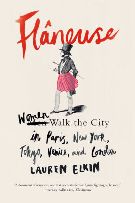 "I walk because, somehow, it's like reading," Lauren Elkin writes in Flâneuse: Women Walk the City in Paris, New York, Tokyo, Venice, and London (FSG). "You're privy to these lives and conversations that have nothing to do with yours, but you can eavesdrop on them. Sometimes it's overcrowded; sometimes the voices are too loud. But there is always companionship. You are not alone. You walk in the city side by side with the living and the dead."
"I walk because, somehow, it's like reading," Lauren Elkin writes in Flâneuse: Women Walk the City in Paris, New York, Tokyo, Venice, and London (FSG). "You're privy to these lives and conversations that have nothing to do with yours, but you can eavesdrop on them. Sometimes it's overcrowded; sometimes the voices are too loud. But there is always companionship. You are not alone. You walk in the city side by side with the living and the dead."
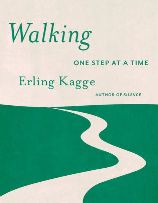 Although Erling Kagge's feet seem firmly planted on the ground in Walking: One Step at a Time (translated by Becky L. Crook, Pantheon), he still sees the mind-bending possibilities: "And this is precisely the secret held by all those who go by foot: life is prolonged when you walk. Walking expands time rather than collapses it."
Although Erling Kagge's feet seem firmly planted on the ground in Walking: One Step at a Time (translated by Becky L. Crook, Pantheon), he still sees the mind-bending possibilities: "And this is precisely the secret held by all those who go by foot: life is prolonged when you walk. Walking expands time rather than collapses it."
The Great Unexpected
by Dan Mooney
Glass half empty meets glass half full in Dan Mooney's novel The Great Unexpected. Late in his life, Joel Monroe has lived for five years "under the watchful eye of a pack of people who treated him like a child." Frank de Selby is his new roommate, a former soap opera star, arriving at Hilltop Nursing Home with a cheerful demeanor, an arsenal of stories and a natty (if slightly worn) wardrobe. Their camaraderie slowly blossoms into a pact, and the two become the most famous escapees Hilltop has ever known.
Joel can't be blamed for resisting the charms of "the famous Mr. de Selby" at first. His wife's sudden death and the passing of the man assigned to her empty bed have plunged him into a mourning he denies. Yet he discovers a kinship with Frank when he realizes the actor is gay--"an isolated, vulnerable man just like himself"--and decides to confide his deepest secret: he's plotting his suicide. Rather than shock, Frank responds with congratulations to Joel on becoming master of his own fate. With theatrical flair, he offers to help him do it right, suggesting they slip away where they can "plan that final farewell." Their foray prompts stern reprimands upon their return, but doesn't stop them from repeating their escapades, downing pints, sampling night life and reminiscing at sites from their past. Frank nudges Joel to live it up, and leads him to realize "with each day in his friend's company he had walked farther away from the void inside himself." Funny and poignant, The Great Unexpected is a charming story of new beginnings and bittersweet endings. --Cheryl Krocker McKeon, manager, Book Passage, San Francisco
Discover: A curmudgeon and a cheerful former actor share a room in a nursing home and soon become a notorious duo in this poignant tale of unexpected friendship.
The Journal I Did Not Keep: New and Selected Writings
by Lore Segal
Lore Segal's The Journal I Did Not Keep collects a number of the writings she has produced over the course of her illustrious, decades-long career. Made up of essays, short fiction, excerpts from her novels and bits of memoir, this collection is thoughtfully curated around the titular concept of a journal not kept.
Segal (Shakespeare's Kitchen, Half the Kingdom), now age 91, reconstructs several childhood memories that have remained with her throughout the years: hiking through the Alps with her father, trying to identify her grandmother's recipe for a special rye bread, being bullied in England as a refugee child. What emerges from these reconstructions is a consideration of the ways in which memory adapts to the lessons learned with time and age. What details have become more salient over time? How do memories organize themselves into narrative ex post facto? These are the questions Segal's writing asks her readers to consider.
As a Jewish child born in Vienna, Segal fled from the Nazis in late 1938 on one of the first Kindertransport missions. She subsequently spent the rest of her childhood and adolescence in English foster homes, mostly separated from her parents. Having lived on Manhattan's Upper West Side for the past half-century, Segal remains one of the most distinct voices of the 20th-century American literary tradition. Consistently perceptive with a wry humor lurking just beneath the surface, The Journal I Did Not Keep is a joy to read. --Emma Levy, publishing assistant, Shelf Awareness
Discover: A pleasure to read straight through or dip in and out of, The Journal I Did Not Keep collects some of Lore Segal's most memorable essays and pieces of short fiction.
Mystery & Thriller
Their Little Secret
by Mark Billingham
At the start of Mark Billingham's Their Little Secret, Detective Inspector Tom Thorne and his partner, DI Nicola Tanner, look on as pieces of Philippa Goodwin's body are scraped off train tracks and sent to the morgue. CCTV footage shows Philippa leaping into the path of an oncoming train in the London Underground, and the police consider it a suicide.
Thorne and Tanner notify the deceased's sister and niece, who claim the person responsible is Patrick Jennings, a man who seduced Philippa before vanishing with all her money. The two women don't deny she jumped, but they insist Jennings drove her to it.
Philippa's death is now deemed to involve fraud, so Thorne and Tanner hand the case over to the proper department. But then Jennings's DNA, collected at Philippa's house, matches DNA found at a murder. Camera footage reveals only the victim and an older woman, no Patrick Jennings. The detectives come to realize they're chasing a man-and-woman killing team.
Thorne and Tanner are formidable characters, but Billingham allows them their frailties. Thorne's girlfriend has kicked him out of her flat, and he wrestles with whether or not that's a bad thing. Following the brutal killing of her previous partner, Tanner experiences intense guilt over her and Thorne's complicity.
Billingham (Bloodline) refers to an incident from a previous book as the cause of tension in the detectives' working relationship, but those allusions don't distract from the enthralling, twisty story, with its smartly cohesive style and gallows humor. --Paul Dinh-McCrillis, freelance reviewer
Discover: In Their Little Secret, detectives chase down a couple with a passion for killing.
Blood
by Maggie Gee
Maggie Gee's Blood could be called an unorthodox thriller, a black comedy or representative of any number of other genres. For many American readers, it will be an introduction to the acclaimed author of 15 books published in the U.K. The genre may be difficult to place, but it's easy to see Gee's strengths, particularly in her characters. The novel is told primarily from the perspective of Monica Ludd, a gigantic, buxom woman from a family haunted by the abuse and cruelty meted out by their physically imposing father on his wife and children. When the father is attacked, Monica becomes the chief suspect.
Blood's plot is not particularly twisty--despite the novel's short length, there are passages where Monica meditates on her twisted childhood and a country thrown into turmoil by Brexit and terrorist attacks. What carries the book is Monica's perspective: equal parts rude, funny, fearful, literate and randy. Monica is an unusual but effective vehicle for a conversation about the legacy of abuse and violence. The contradictory aspects of her character echo the difficulty of the topic. At one point, Monica reminds the reader that her father always "adored" her mother in the midst of relating the ways he tormented her: "Yes, I know, it's complicated; life's complicated, get over it."
Instead of twists and turns, Gee immerses the reader in dread. Her father's fate uncertain, Monica fears that he will return and continue his reign of terror. Blood asks whether a monster can be stopped without further monstrous violence. --Hank Stephenson, bookseller, Flyleaf Books, Chapel Hill, N.C.
Discover: Blood transforms what could be a grim story of abuse and trauma into tragi-comedy thanks to the voice of its outsized, hilarious protagonist and her acid commentary on Brexit-era Britain.
Romance
The Highland Earl
by Amy Jarecki
The Earl of Mar and Lady Evelyn Pierrepont are at odds in the sixth book of Amy Jarecki's Lords of the Highlands series. Evelyn has been a spy for the Jacobites in England, using her father's underhanded dealings to fund the cause. "Bobbin' John" Erskine, a widowed Scottish diplomat, is privy to secret information that could help the Jacobites. He's also looking for a new bride to care for his two sons and with a dowry that will clear his debts. Evelyn's father accepts Mar's proposal, and though Evelyn has no desire to wed someone against her political beliefs, she recognizes the benefit of insinuating herself into his confidences.
The Highland Earl starts as a spy drama and quickly turns steamy. Evelyn may not agree with what Mar stands for, but she can't help her physical attraction to the Scottish earl. Mar is similarly attracted to Evelyn, though the memory of his wife impedes an emotional connection. While they enjoy the perks of marriage, the two grow as friends and Evelyn becomes closer to Mar's children. But when her spy work brings enemies to the Erskine clan, their budding relationship is tested. Evelyn gets a fair amount of victim blaming for her contributions to the Jacobite cause, though many others are also involved in the plot. Evelyn and Mar's relationship is somewhat modern--they bond sexually before becoming partners and falling in love. It's a refreshing take on a historical romance, and Jarecki crafts immersive, sweeping scenes in bustling London and the lowlands of Scotland. --Amy Dittmeier, adult services librarian, Brookfield Public Library, Ill.
Discover: Known for her knowledge of Scottish history, Amy Jarecki tells a love story between a spy and a widower who find each other through political peril.
Biography & Memoir
Four Friends: Promising Lives Cut Short
by William D. Cohan
In Four Friends: Promising Lives Cut Short, veteran journalist William D. Cohan (The Price of Silence), a 1977 graduate of the elite Phillips Academy in Andover, tells the stories of four of his contemporaries. Each was prominent in life and died suddenly in his late 30s, or just beyond. As much as it is an account of those tragically brief lives, Cohan's book is a frank meditation on the fragility and preciousness of life at any age.
Of Cohan's four subjects, the most conspicuous, and closest to him, was John F. Kennedy Jr. The young Kennedy lived most of his four decades in the glare of the media spotlight. At the time of his death in July 1999, he was engaged in two fierce struggles: one to right the fortunes of his foundering political magazine George and the other to save his failing marriage to Carolyn Bessette. Cohan recounts both of these grim stories in intimate detail.
Two of Cohan's other subjects--lawyer Jack Berman and lawyer and businessman Harry Bull--had assembled the sort of gleaming résumés and early career accomplishments that foretold lives of professional eminence and material comfort. Will Daniel, the final member of Cohan's foursome, struggled with the notoriety of being the grandson of President Harry Truman, but by all accounts was a compassionate social worker and a loyal friend.
The tragic deaths of Kennedy, Berman, Daniel and Bull are a reminder, Cohan writes, that "Not even those who have every privilege that life offers, right from the start, can escape the inevitable." --Harvey Freedenberg, freelance reviewer
Discover: A seasoned journalist tells the stories of four of his Andover friends whose lives ended tragically before they reached their prime.
Late Migrations: A Natural History of Love and Loss
by Margaret Renkl
Margaret Renkl's Late Migrations: A Natural History of Love and Loss is a quiet but stunning collection of essays merging the natural landscapes of Alabama and Tennessee with generations of family history, grief and renewal. Renkl's voice sounds very close to the reader's ear: intimate, confiding, candid and alert.
Renkl grew up in "lower Alabama," the adored child of parents, grandparents and great-grandparents: in an old picture, "my people are looking at me as if I were the sun." Her childhood was lived close to the red dirt, pine needles and blue jays of that space. As an adult, she lives in Nashville with a husband and three sons, and carefully cultivates a backyard garden with bird nests, baths and feeders. These are the backdrops to her observations of nature. "The cycle of life might as well be called the cycle of death: everything that lives will die, and everything that dies will be eaten."
Late Migrations studies family and loss: the deaths of great-grandparents, grandparents and parents; Renkl becoming a parent herself and worrying about her children. This is also a book about the labors of bluebirds, red-tailed hawks and cottontails. A book of subtlety and sadness, yes, but also a tough, persistent joy in the present and the future. "Human beings are creatures made for joy," Renkl writes. "Against all evidence, we tell ourselves that grief and loneliness and despair are tragedies.... In the fairy tale we tell ourselves, darkness holds nothing resembling a gift." Part of her work in this book is to find and recognize the gift in the darkness. --Julia Kastner, librarian and blogger at pagesofjulia
Discover: This subtle, searing essay collection examines the griefs of family and of the natural world.
Political Science
When Islam Is Not a Religion: Inside America's Fight for Religious Freedom
by Asma T. Uddin
When Islam Is Not a Religion by Asma T. Uddin offers a bold exploration of Islam's legal place in U.S. society, as well as a deeply personal glimpse into one American family's Muslim faith. As an attorney devoted to protecting the religious liberties of all Americans, Uddin draws on her legal experience to examine why this constitutional right is not available equally across all faiths, specifically Islam.
Uddin was on the legal team that represented the owners of crafts chain Hobby Lobby in Burwell v. Hobby Lobby (2014). She feels confident asserting that, had Hobby Lobby been owned by a Muslim family asserting its religious freedom rights instead of a Christian family, the conservative majority on the Supreme Court would likely not have ruled in its favor. Concerned about raising her children in a climate of mistrust, Uddin is fearless in calling out what she sees as a religious double standard.
In a fascinating chapter devoted to hijab, Uddin reveals that she stopped wearing her head covering because of its politicization in the U.S. She quotes an alarming Air Force policy paper that calls the headscarf a form of "passive terrorism," a refusal to "speak against or actively resist terrorism."
Uddin's efforts to counter ignorance with grace and humility are ever-present in this well-researched first book. She presents the reader with thought-provoking examples of religious persecution that ultimately threaten to compromise the religious freedom of all Americans, not just Muslims. --Shahina Piyarali, writer and reviewer
Discover: A religious liberty lawyer courageously resets the conversation on the constitutional rights of Muslims as balanced with national security interests.
Social Science
Three Women
by Lisa Taddeo
Lisa Taddeo is not a soothsayer: she's a writer whose work has appeared in well-regarded magazines and anthologies like Best American Sports Writing. But if she's not clairvoyant, how did she know, when she began her eight years of work on Three Women, that the book would arrive at the exact moment when the #MeToo-grappling world so desperately needs it?
After driving across the country six times with her eyes peeled for subjects willing to talk about their sex lives "on the record and without holding back," Taddeo was lucky enough to gain the trust of three women. In an author's note, she says that she "spent thousands of hours" with her subjects, including by phone, text and e-mail when it was impossible for her to be physically present. (Take note: Three Women contains explicit sex scenes.) She distilled those hours of storytelling into dexterous and suspenseful third-person narratives, devoting about a half dozen alternating chapters to each woman.
That Taddeo uses Maggie May Wilken's real name (she changes those of her other subjects) reflects a grim truth: Maggie's name is part of the public record. When she was a 17-year-old senior at West Fargo High, she began an affair with her English teacher, Aaron Knodel, a married father in his late 20s. Throughout their sexual relationship, Aaron kept his pants on, apparently believing that this made the affair only half as illicit. Aaron told Maggie that he wanted to leave his wife. He and Maggie exchanged "I love yous" and countless texts, one of which his wife intercepted. Aaron broke off the affair and all contact with Maggie. Several years later, she is still a wreck, seeing a therapist who writes her prescriptions and finding it impossible to continue at North Dakota State University. When Maggie learns that Aaron has been named North Dakota's Teacher of the Year, she finally tells her parents and the police what happened. At his trial, Aaron is found not guilty.
Unlike Maggie, Lina, who lives in southern Indiana, is the instigator and in her early 30s when she begins her affair. The stay-at-home mom told herself that if her husband's sexual disinterest in her dragged on for three humiliating months, she would take action. In fact, the reader will come to learn that Lina is defined by her agency: she gets a prescription for her depression, can pull a last-minute babysitter out of a hat, and joins a women's discussion group, where she announces that she is sleeping with her high school boyfriend and has asked her husband for a separation. Although Lina presents this to the group as good news, her chapters find her in not just love but a constant state of agitation: When will she see her lover again? The guy makes it clear that he has no plans to leave his wife. Lina isn't fooling herself: "She knows the truth even as she tries to shut it out: he is terrible to her."
Maggie surely would have benefited from a better support system and Lina from the diversion and economic independence offered by a job. But does Sloane need anything at all? She works at a Newport, R.I., restaurant that she co-owns with her husband, Richard, who adores sleeping with her. The sex she's having outside the marriage is rewarding for all involved: "It turned Richard on to watch his wife with another man in his presence, or sometimes it could be just her and the other man while Richard was working. Sloane would send verbal and video updates via text message." She has an epiphany while reading Fifty Shades of Grey: "If previously she'd been simply accommodating her husband's desire without being true to her own, now Sloane had a new lens through which to see their arrangement. She was a submissive, and a submissive acquiesced to the demands of the dominant." Put another way: her sex life is making exactly none of its participants unhappy, although some harsh words from one bedmate's spousal equivalent do give Sloane's conscience a workout.
Would Sloane have been less comfortable in the submissive role if her parents had given her more attention when she was spindly from the adolescent bulimia they somehow never picked up on? Would Maggie have had the strength to run from her teacher if her parents hadn't been alcoholics? Would Lina's lover have had less of a hold on her if he hadn't suddenly stopped phoning her in high school after hearing rumors that she'd slept with three guys at a party (they'd actually drugged and raped her)? Implicitly posed by each woman's narrative are these questions, but Taddeo isn't asking them. In her prologue, she writes, "I set out to register the heat and sting of female want so that men and other women might more easily comprehend before they condemn." Only a reader with a bum ticker would leave Three Women more freighted with reproach than with compassion.
Make no mistake: readers will judge these women's choices. But the point is that the stories of Maggie, Lina and Sloane are offered here without judgment, which allows readers to objectively view their multivalent experiences. With Three Women, a heavyweight and a knockout both, Taddeo makes it possible for each woman to be the agent of her own storytelling, and the book's very existence insists that they are to be believed. It doesn't get much more #MeToo than that. --Nell Beram
Science
Archaeology from Space: How the Future Shapes Our Past
by Sarah Parcak
Space archeology sounds like science fiction: a cross between Indiana Jones and Star Wars. Coincidentally, those were Sarah Parcak's favorite movies when she was growing up. But Parcak is now an Egyptologist, a professor at the University of Alabama-Birmingham, and an actual space archeologist--she uses high-tech satellite imagery in her on-the-ground work. Archaeology from Space introduces the burgeoning subfield and explores how it is transforming the work of people like Parcak and her colleagues.
Parcak shares her childhood fascination with archeology and her experience on digs, both as a student and a professional. She gives a brief history of space archeology, highlighting the role of aerial photographs, remote-sensing technology and more recent advances in satellite imagery from NASA and other organizations. She then delves into the stories of specific digs and projects she has worked on, which have been profoundly shaped by insights gained from comparing satellite images to sites on the ground. Parcak's love for her field and her deep wonder and excitement come through on every page.
"Discovering a city is only the beginning," she says. Archeologists ask a wealth of questions about every site they come across, and the true gift of her work is "the opportunity to search for those answers."
Clear, accessible and fascinating, peppered with witty asides and informative photos, Archaeology from Space is an excellent introduction to an exciting subfield that's still flying under the (satellite) radar. As Parcak herself says, quoting another of her heroes: "The game is afoot. Expect surprises." --Katie Noah Gibson, blogger at Cakes, Tea and Dreams
Discover: Egyptologist Sarah Parcak enthusiastically introduces readers to the growing field of space archeology.
Performing Arts
So Real It Hurts
by Lydia Lunch
Lydia Lunch, the musician, poet and pioneer of the No Wave music genre (that rejected commercial New Wave music) was hailed by the New York Times as "the angriest punk of '70s New York." So Real It Hurts proves that more than 40 years into her career, she's lost none of her blistering anger and astringent eloquence. In his introduction, the late Anthony Bourdain wrote, "During a period that is still considered a golden time for art, music, and transgression, she was always the smartest person in the room."
This slim collection of potent essays, profane rants and astute cultural critiques sometimes reads like the writings of a hypnotic Beat poet. On her insomnia, she writes, "Exhausted, but jacked up, like an electric rigor mortis that short-circuits the neurotransmitters, creating a dense fog of chronic irritation that can cloud even the simplest of tasks." Elsewhere, her opinions are strong and original. Ruminating on war, she opines, "Maybe war is just menstrual envy. If men bled every month as much as I do, maybe they wouldn't have such incredible bloodlust."
Lunch's lacerating autobiographical essays detail her history of sexual and substance abuse and mental health problems. The powerful essay "1967" describes the post-traumatic stress she suffered from the ages of five to eight from the race riots raging outside her front door, as well as the war inside her home "as the favored daughter of a door-to-door salesman who couldn't keep his hands to himself." These take-no-prisoner essays are not for the faint-hearted, but they are confrontational, confessional, electrifying and unforgettable. --Kevin Howell, independent reviewer and marketing consultant
Discover: Confrontational singer/poet/activist Lydia Lunch's So Real It Hurts collects her electrifying and unforgettable essays, rants and cultural critiques.
Children's & Young Adult
The Magnificent Migration: On Safari with Africa's Last Great Herds
by Sy Montgomery; photographs by Roger and Logan Wood
Nature writer and Sibert medalist Sy Montgomery (How to Be a Good Creature) joins friend and wildlife biologist Dr. Richard Despard Estes on a stunning safari through the Serengeti to track the last great African wildebeest migration. "The extravagance of their number stupefies," Montgomery's text states, "one and a quarter million wildebeests, in separate herds of tens of thousands, all on the move at once, accompanied by hundreds of thousands of zebras and gazelles. It is the largest mass movement of animals on land." For two weeks, Montgomery, Estes ("the guru of gnu") and the other members of their expedition follow the signs of these animals that "drive the ecology and evolution of the largest savanna ecosystem in the world."
As the crew experiences a series of near misses seeing the migration, they encounter myriad other life forms affected by the existence of the wildebeest: predators such as lions and crocodiles; fellow travelers including the zebra and the gazelle; the giraffe, whose population depends on the wildebeest. "The presence of so many wildebeests gives the local lions something to eat other than baby giraffes.... The more wildebeests there are, the more giraffe calves survive." Estes, who has been studying wildebeests for "more than half a century" and is considered the world's top expert, educates his companions on the gnu and its environment as they travel through the savanna.
Engrossing and exciting, the search for the wildebeest should fascinate and enlighten young animal lovers. Montgomery's supplemental content on other migrations and tangential information, as well as photographs from two members of the safari, superbly enhance the awe-inspiring narrative of their search for the gnu. Montgomery may inspire some to visit the Serengeti personally, but for those who can't, The Magnificent Migration is the next best thing. --Jen Forbus, freelancer
Discover: Nature writer Sy Montgomery takes young readers on an awe-inspiring African safari to learn how the wildebeest migration drives the Serengeti's ecology.
The Grief Keeper
by Alexandra Villasante
Seventeen-year-old Marisol Morales knows all about bad luck. Her father "gambled and drank," forcing her older brother, Pablo, to join a gang to provide for the family. Then Pablo was killed by the gang. Terrified, Marisol and her sister, 12-year-old Gabriela, used all of their money to pay coyotes to take them to the United States. After surviving the trek, Marisol is told she and Gabi might be allowed to stay if she will test a "biomedical device" designed to help people with PTSD; the treatment "allows the chemicals... released into the body of a person suffering trauma... to be transferred to another person." That is, Marisol would take on another person's grief in exchange for a green card. Seeing no other option, Marisol agrees: "What is a little grief in exchange for safety?"
The sufferer is Rey Warner, a wealthy 17-year-old. She is suicidal after her twin brother's death but refuses to give up her grief for fear of losing her brother. If Rey won't use the device, Marisol has no deal, so it falls to her to convince Rey to relieve her burden. The two slowly develop a relationship that means both beautiful and painful experiences for Marisol--even as she feels how natural her and Rey's mutual attraction is, the trauma she must endure because of Rey makes her fearful.
Villasante's debut is for the reader who wants to get down and dirty with the emotional landscape, who wants a romance that is hard-earned and sweetly won. The Grief Keeper shows us trauma and grief without ever glorifying the pain or wallowing in the tragedy, creating a realistic yet still hopeful world seen through the gaze of an intelligent, curious protagonist. --Siân Gaetano, children's and YA editor, Shelf Awareness
Discover: In Alexandra Villasante's YA debut, a young woman from El Salvador agrees to a terrible deal in hopes of finding safety in the United States.
| Advertisement Meet belle bear! |


